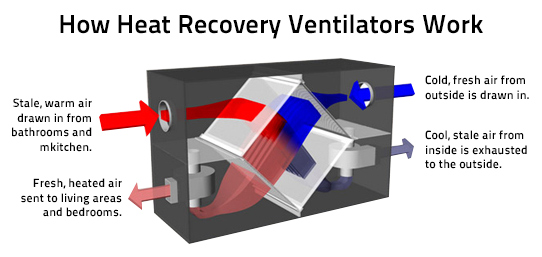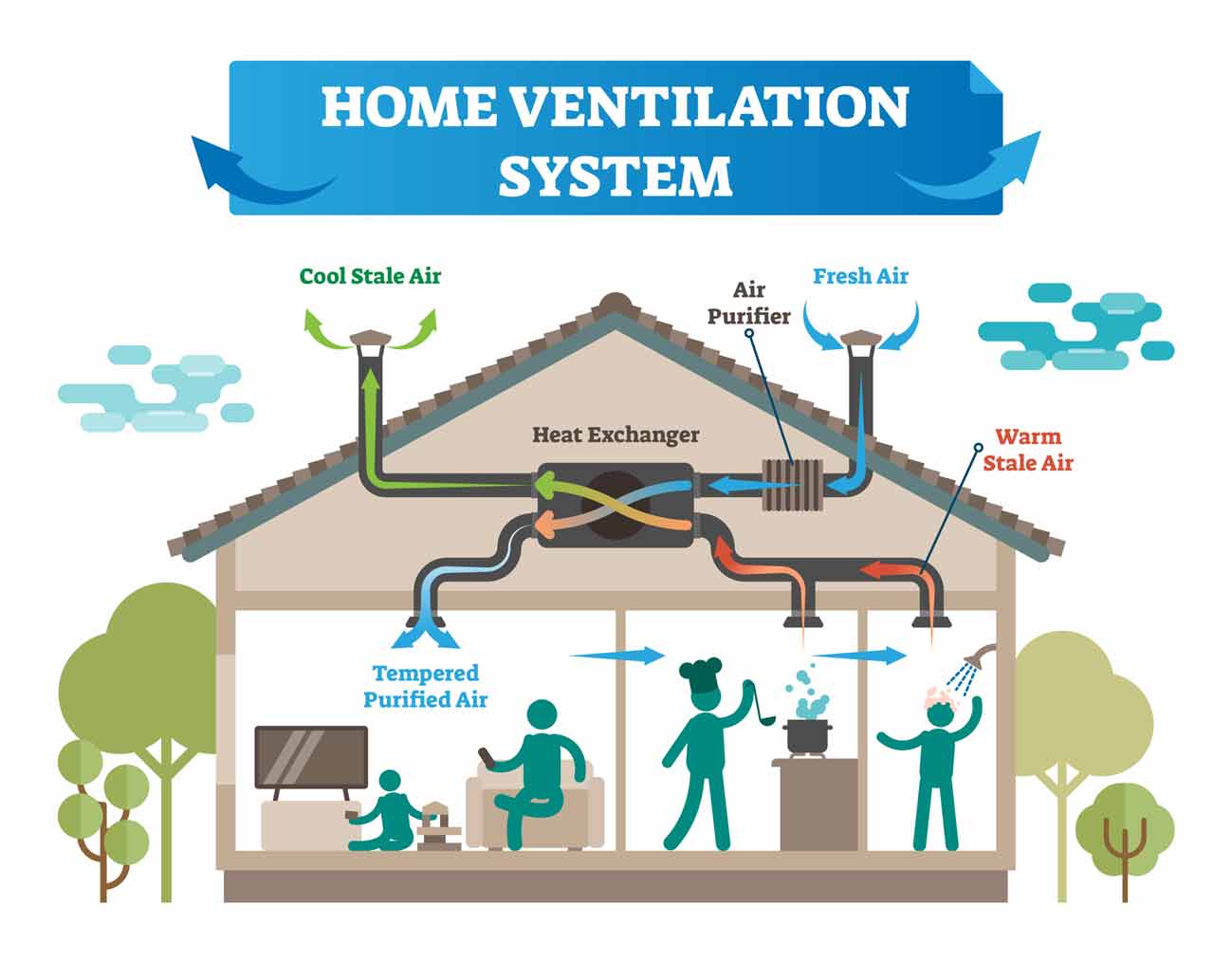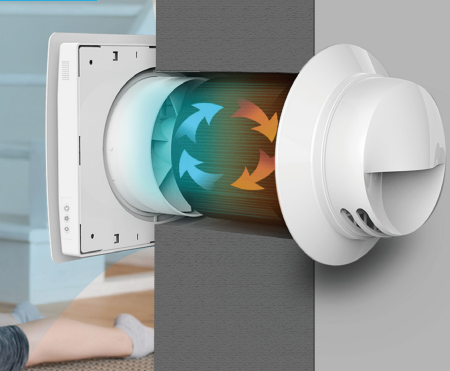Misconceptions About HRV That Homeowners Should Know
Wiki Article
Discovering the Conveniences of Heat Recovery Ventilation for Power Effectiveness in Homes
Heat Recovery Ventilation (HRV) systems offer property owners a sensible strategy to boosting power efficiency. By redeeming warm from outward bound air, these systems can substantially reduce cooling and heating prices. In addition, they give a steady supply of fresh air, improving indoor air high quality and convenience degrees. As house owners take into consideration lasting options, comprehending the nuances of HRV systems comes to be progressively important. What variables should one assess before making such an investment?Recognizing Heat Recovery Ventilation Solutions

Just How HRV Boosts Indoor Air Quality

Energy Cost Savings: The Economic Benefits of HRV
Maximizing energy efficiency, heat recovery ventilation (HRV) systems offer considerable financial benefits for house owners. By recouping and reusing heat from exhaust air, HRVs considerably lower home heating and cooling expenses. This innovation can lead to energy cost savings of as much as 30%, relying on climate and usage patterns. Property owners often notice minimized utility costs quickly after installment, making HRVs an economically wise financial investment in time. Additionally, several areas provide incentives or rebates for energy-efficient upgrades, additionally helpful site improving the financial charm. As energy prices proceed to climb, the cost-effectiveness of HRVs ends up being progressively clear. Overall, the unification of HRV systems not only advertises energy performance however also adds to long-lasting financial cost savings for households.The Ecological Impact of Heat Recovery Ventilation
A considerable ecological advantage of heat recovery ventilation (HRV) systems hinges on their ability to decrease total energy usage. By redeeming heat from exhaust air and transferring it to inbound fresh air, HRV systems decrease the demand for energy-intensive heating and cooling techniques. This decrease in energy demand adds to lower greenhouse gas exhausts, as much less nonrenewable fuel source is needed to keep comfy interior temperatures. Furthermore, HRV systems improve interior air top quality by efficiently exchanging stale air with fresh outdoor air, lowering reliance on mechanical cooling systems that can harm the atmosphere. Generally, the execution of HRV systems supports lasting living practices and aligns with international efforts to fight environment change by promoting power effectiveness in domestic settings.
Picking the Right HRV System for Your Home
Just how can house owners assure they pick the appropriate heat recovery ventilation (HRV) system for their demands? Initially, they need to analyze their Bonuses home's dimension and layout, as these variables influence air flow demands. Next off, evaluating the system's effectiveness ratings is essential, as greater scores show better efficiency and power financial savings. Home owners should likewise take into consideration installment and upkeep expenses, comparing various brands and models for value. Furthermore, it is necessary to review sound levels, as some systems operate even more quietly than others. Consulting with heating and cooling professionals can provide customized suggestions based on particular home problems. Lastly, analyzing user testimonials and warranties can assist in making an informed decision, ensuring that the chosen HRV system efficiently boosts indoor air quality and power efficiency.Often Asked Concerns

How Usually Should I Clean or Maintain My HRV System?
The frequency of cleansing or preserving a warmth healing air flow (HRV) system normally relies on usage and environmental elements. Usually, it is suggested to execute upkeep every six months to ensure peak performance and air top quality.
Can HRV Systems Aid Minimize Humidity Levels Indoors?
HRV systems can effectively decrease indoor humidity levels by trading stale, damp air with fresh, drier air from outdoors. HRV Heat Recovery Ventilation. This process helps keep a balanced indoor atmosphere, boosting convenience and stopping moisture-related concerns
What Is the Life expectancy of a Regular HRV System?
The life-span of a regular heat recovery ventilation (HRV) system differs, usually lasting in between 10 to 15 years. Routine upkeep can expand its efficiency and operational life, guaranteeing peak efficiency throughout its use duration.Are There Any Noise Interest In HRV Equipments?
Sound worries with HRV systems can emerge, particularly from fan operation. Nevertheless, lots of contemporary devices are developed to decrease audio degrees, guaranteeing they run silently while read here keeping performance, which resolves potential disturbances in living environments.Can I Set Up an HRV System Myself, or Do I Need a Specialist?
The specific contemplated whether to set up the heat recovery ventilation (HRV) system personally or work with a specialist. Normally, while DIY installment is feasible, proficiency guarantees correct capability and compliance with local structure codes, improving system effectiveness.Report this wiki page